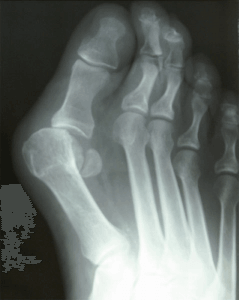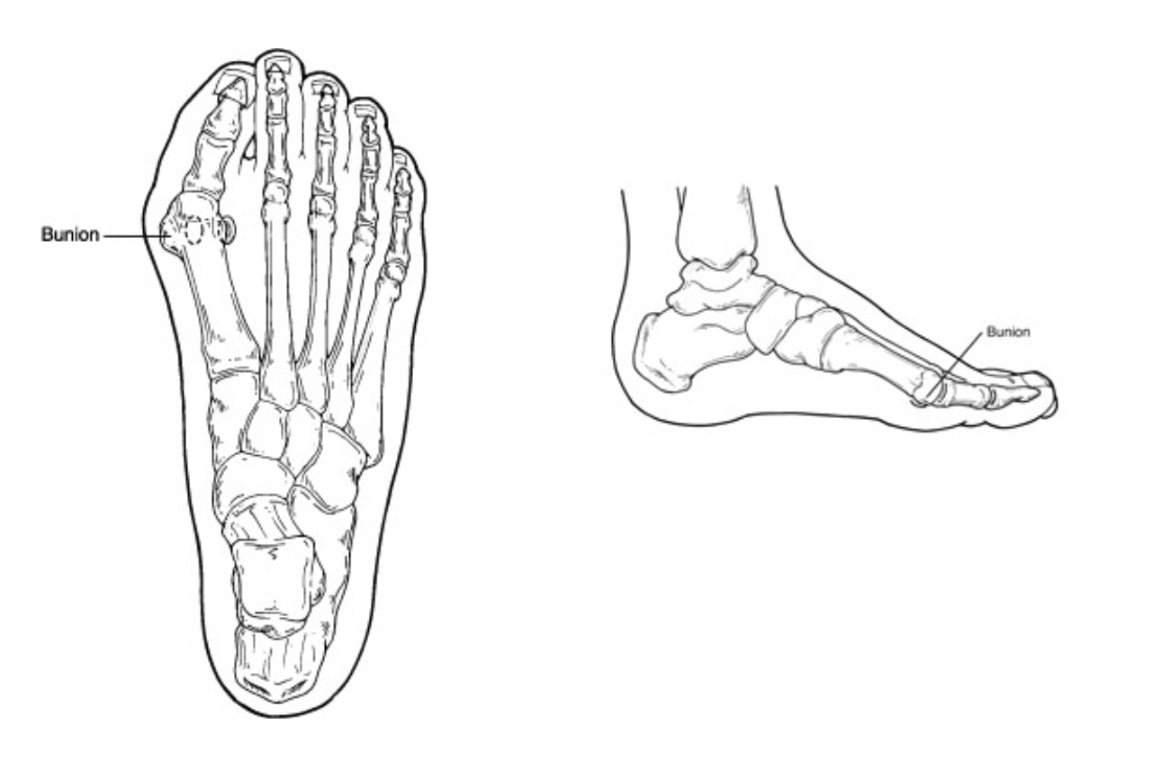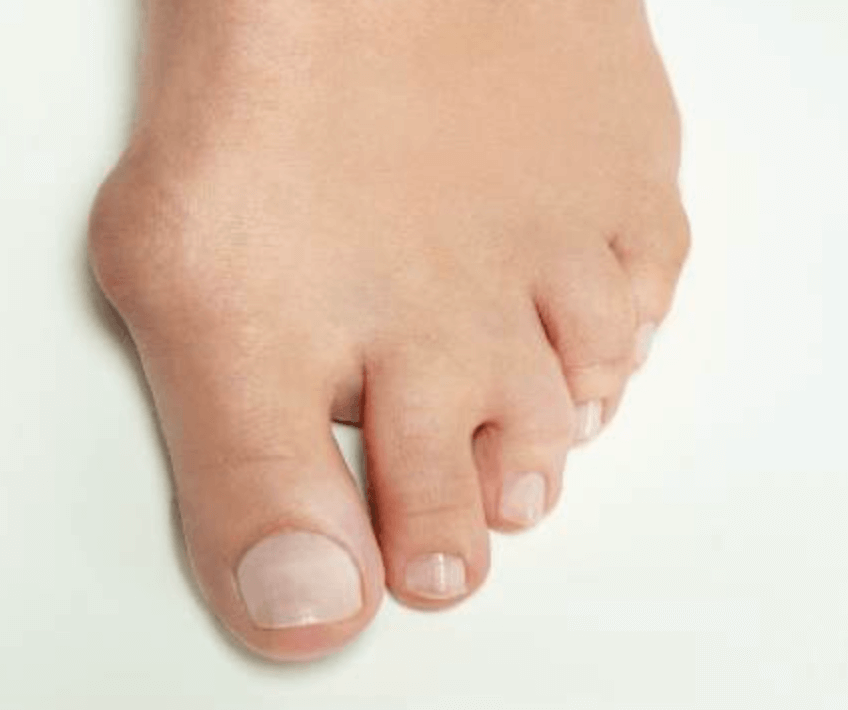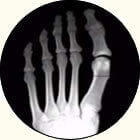bunions
Displaying items by tag: bunions
Dr. Brandon Nelson, A Board Certified Foot Physician & Surgeon, Issaquah’s Top Podiatrist, Discusses the Best Bunion Procedure to Have

I have been practicing medicine now for about 15 years and like to look back from time to time on how it has changed. Currently there is a lot of talk about the Lapiplasty bunion and bunion surgery in general. I thought I would take a few minutes and discuss this topic.
Bunion surgery continues to be one of the most common foot surgeries in the United States if not the most common. I believe the last statistic I read was something like almost 350,000 operations per year. It is hard to believe there are that many bunions out there!
The most utilized bunion surgery is the Austin bunionectomy. This is for a couple reasons. One can correct the vast majority of bunions whether small or large. It has a much faster recovery and is technically not as challenging as other operations. It involves the cutting of the metatarsal head in a chevron pattern and shifting that bone medially. It is usually fixated in place with a few screws. Patients can bear weight immediately and are typically in a walking boot for 4-8 weeks. It has good long term results and will probably continue to be the most common bunionectomy for that reason.
The other most talked about bunion procedure is the Lapidus bunionectomy or the Lapiplasty. This procedure is the choice for very large bunions or juvenile bunions. It is technically more challenging but provides for excellent correction. This involves fusion of the metatarsal cuneiform joint to realign the metatarsal. It usually involves a period of non weight bearing from 3-8 weeks. The long term results are excellent.
That begs the question: which procedure is best for bunion patients? Well the answer is not simple. It really involves a couple key considerations. First being how does the rest of the foot look and how much motion do we have through the 1st metatarsal? Second is patient age and activity level. Third would be overall general health of the patient and bone quality. I recommend seeing a surgeon that performs a lot of bunion surgeries as their outcomes will be better.
If you have a bunion and would like to know your options and have it evaluated schedule, make an appointment with me and I will help you.
Sincerely,
Board Certified Physician & Surgeon
Issaquah’s Top Podiatrist & Foot/Ankle Surgeon
Dr Brandon Nelson, A Board Certified Physician & Surgeon, Issaquah’s Best Podiatrist, Discusses Why Lapiplasty Bunion Correction

Bunion surgery is the most common foot surgery done in the United States. There are many different techniques to correct a bunion. Most involve either cutting of a bone or fusion of a bone. All involve realignment of a joint in order to improve the function and appearance of the foot.
I have now been practicing medicine and surgery for over 15 years. I am a podiatrist in Issaquah and have had the opportunity to help 1000’s of patients with bunions. Bunions can be extremely painful and the majority of people will require them to be fixed at some point. This experience has led me to utilize Lapiplasty on the majority of my patients.
Why the Lapiplasty?
1. It provides correction at the center of a bunion deformity
2. It has been proven to have the best long term outcomes
3. It stabilizes the foot structure
4. It does an excellent job for large bunions
5. It has been utilized for over 100 years
I encourage anybody with a bunion to get evaluated by a surgeon that performs a significant amount of bunion corrections annually. Experience can make a big difference in outcomes and the Lapiplasty is a technically difficult procedure to execute. If you have a bunion and would like to discuss the Lapiplasty make an appointment with Issaquah’s top Podiatrist at 425-391-8666 or make an online appointment.
Sincerely,
Board Certified Foot & Ankle Surgeon
Dr. Timothy Young, a Board Certified Foot Surgeon, Discusses My Top 5 Reasons Why I Recommend the Lapiplasty Bunion Repair

Dr. Timothy Young, a Board Certified Foot Surgeon, Discusses My Top 5 Reasons Why I Recommend the Lapiplasty Bunion Repair
Introduction
Bunions can be painful and disruptive, affecting the quality of life for many individuals. Traditional bunion surgery, also known as a bunionectomy, has been the standard approach for decades. However, in recent years, a groundbreaking surgical technique called Lapiplasty has emerged as a game-changer in the field of bunion repair. Surgeons worldwide are increasingly recommending Lapiplasty for several compelling reasons. In this blog, I will review the top 5 reasons why I recommend the Lapiplasty Procedure for bunion surgery.
1. Superior Three-Dimensional Correction
One of the most remarkable aspects of Lapiplasty is its ability to correct bunions in three dimensions, addressing the root cause of the deformity. Traditional bunion surgery often focuses on the visible bony bump, leaving the underlying bone misalignment uncorrected. Lapiplasty, on the other hand, repositions the metatarsal bone, restoring its proper alignment in all three planes—sagittal, transverse, and frontal. This three-dimensional correction not only provides better cosmetic results but also reduces the risk of bunion recurrence, making it a preferred choice among surgeons.
2. Faster Recovery and Reduced Downtime
Lapiplasty's minimally invasive approach and stable fixation results in faster recovery times for patients. Unlike traditional bunion surgery, which often requires patients to remain off their feet for an extended period, Lapiplasty allows patients to bear weight on their feet and start walking within days. This accelerated recovery can significantly improve a patient's overall experience and quality of life during the healing process.
3. Long-Lasting Results
Surgeons recommend Lapiplasty due to its track record of providing more durable and longer-lasting results. Traditional bunion surgery may offer temporary relief, but recurrence rates can be high. The Lapiplasty's comprehensive correction of the deformity decreases the likelihood of bunions returning, allowing patients to enjoy a more permanent solution to their foot pain.
4. Stable Fixation
The Lapiplasty utilizes very stable plates. These allow earlier weightbearing and return to activities. This fixation helps to promote optimal bone healing and long term stability. Surgeons who recommend Lapiplasty often highlight the fixation benefits of this innovative technique, which can boost patients' confidence and satisfaction with their results.
5. Evidence-Based Success
Surgeons have confidence in recommending Lapiplasty due to the strong evidence supporting its success. Numerous clinical studies and real-world cases have demonstrated the effectiveness of this procedure in addressing bunions, relieving pain, and improving patient outcomes. These data-driven results reassure both surgeons and patients that Lapiplasty is a reliable and proven treatment option.
Conclusion
Lapiplasty has revolutionized the field of bunion repair with its three-dimensional correction, quicker recovery times, long-lasting results, stable fixation, and evidence-based success. Surgeons worldwide recommend Lapiplasty as a superior alternative to traditional bunion surgery for patients seeking a more comprehensive and permanent solution to their foot pain. If you're considering bunion repair, please contact my office so I can evaluate your specific needs and discuss the benefits of Lapiplasty as a potential solution to your bunion woes.
If you are experiencing foot or ankle pain, give us a call at 425-391-8666 or make an appointment online today.
Dr Brandon Nelson, A Board-Certified Physician & Surgeon Discusses Bunions and When To Fix Them

Bunions are an inherited foot deformity that is made worse with time and shoe gear. The size of a bunion increases as a person puts more mileage on their feet. It is the natural progression of a bunion to get larger and eventually become painful or make it difficult to fit shoes. I encourage anybody with a bunion to get evaluated early as there are tools to slow the progression of a bunion. But let’s focus on when you should think about having your bunion fixed.
Bunion surgery has really changed in the last couple years and more people than ever are having their bunions fixed. This is because research and techniques have advanced. We have seen a shift to correcting bunions at the apex or center of rotation where they occur. The most prevalent procedure is making a shift towards the Lapiplasty. I personally have been using this procedure for years and find it has the best long-term outcomes. So that leads us to when is the right time to fix a bunion.
I like to focus on the foot as an entire unit as the primary driver of when to fix a bunion. If you look down at your foot when you unload it or take it off the ground what does the big toe position look like? Is it crossing over or under the second digit? If it is, you are ready to have your bunion fixed. I advise my patients to have it fixed before this occurs. If you catch the bunion early and have the foot stabilized with bunion surgery before it crosses over the second toe that is even better. If you wait for the second toe to get involved, you will often need to have that toe operated on as well.
If you have a bunion I can help, call to make an appointment with me at 425-391-8666 or schedule an appointment online today.
Sincerely,
American College of Foot & Ankle SurgeonsDr Timothy Young, a board certified foot surgeon talks about Reversing a Bunion: Understanding the Causes, Treatment Options, and Prevention Part 2

Dr Timothy Young, a board certified foot surgeon talks about Reversing a Bunion: Understanding the Causes, Treatment Options, and Prevention Part 2
Surgical Intervention:
Bunionectomy: In some cases where conservative treatments are not effective, a bunionectomy may be necessary. This surgical procedure involves realigning the affected structures and bones to correct the deformity. The specific surgical technique used will depend on the severity and complexity of the bunion.
Preventive Measures:
It is often not possible to prevent bunions however, certain measures can help slow down their progression or reduce the likelihood of developing them:
a. Footwear choices: Look for shoes that provide extra room for the toes, have a wide toe box, and have good arch support.
b. Avoid high heeled shoes: Wearing high-heeled shoes can exacerbate existing bunions or increase the risk of developing them.
c. Maintain a healthy weight: Excess body weight can put extra pressure on the feet, potentially worsening bunions.
d. Exercises and stretches: Regular foot exercises and stretches can help strengthen the muscles and improve flexibility.
Dr. Young's Postoperative Swelling Tips
Conclusion:
Reversing a bunion involves a comprehensive approach combining conservative treatments, such as good footwear and orthotic devices, with surgical treatments if necessary. Early preventive measures are helpful steps in treating bunions effectively. If you are experiencing foot pain or notice a bunion forming, please contact our clinic. We specialize in bunion treatments.
Give us a call today at 425-391-8666 or make an appointment online today.
Dr Brandon Nelson, A Board-Certified Physician & Surgeon Discusses The Reason To Have a Lapiplasty Bunionectomy

Bunions can be extremely painful and limiting to one’s activities. It is hard to find shoes, especially comfortable shoes. Bunions continue to grow and become difficult to manage. I have seen large and small bunions that are painful. Most bunions end up requiring surgical repair.
I see a lot of patients that have been deciding whether or not to fix their bunion. I ask all my patients the same things, is it painful, does it interfere with life and is it getting bigger? These seem to be all good reasons to fix your bunion. Fixing your bunion has never been easier. The Lapiplasty is one of my most favorite procedures as it provides reproducible results and long lasting correction. Most patients can begin to weight bear at 2 weeks and return to activities much sooner than previous procedures.
If you have a bunion and have been contemplating having it fixed I can help. I have an onsite surgical suite making it more convenient and saving both time and money. Make an appointment today at 425-391-8666 or fill out a contact form online and we'll reach out to you.
Sincerely,
American College of Foot & Ankle Surgeons
Dr. Brandon Nelson, A Board Certified Physician and Surgeon, Discuss When To Consider Having Your Bunion Fixed

The bunion deformity is an inherited foot structure issue. Most people that develop a bunion have a family history of bunions. They usually have a parent or grandparent that has a similar type of foot or foot problem. The foot structure that predisposes one to a bunion can be inherited. Usually this type of foot is more prone to flattening or pronating and this over time can result in a bunion. There are other factors that can accelerate the development of a bunion as well.
Wearing high heel shoes has been shown to put more pressure on the forefoot and therefore speed up the process of developing a bunion. Additionally any exercise that puts increased force on the foot can technically speed up the growth of a bunion i.e. running, jumping or similar exercises. The bunion develops as the body tries to stabilize the foot with these activities.
The bunion is a shifting of the 1st metatarsal bone to try and control abnormal flattening of the arch. This is one of the first adaptations the body utilizes. Patients often think there is a growth of bone at the site but technically it is the bone shifting out of place that occurs and creates the illusion of something growing. This is why there are no conservative measures that can move the bone back into correct alignment and why surgery is the only long term fix.
Surgery for bunion surgeries has really changed in the last couple decades. New techniques allow for a much faster recovery and healing times. If you have a painful bunion or would just like a consultation on bunions in general I can help. Give us a call at 425-391-8666 or make an appointment online today.
Sincerely,Dr Brandon Nelson
Dr. Brandon Nelson, A Board Certified Physician & Surgeon, Discusses Bunions in Children

I see quite a few pediatric patients and a number of juvenile bunions. The major factor to development of a juvenile bunion is family history or genetics. Almost every child I see with a bunion has a family history of bunions. Usually mom and/or grandma have a bunion and often even their siblings have one. When bunions present early in development they can be difficult to manage. It is hard to find success in the conservative realm with bunions and quite a few require surgery.
Surgery for the juvenile bunion can be very rewarding and provide excellent long term results. First and foremost, it requires a physician work up and x-ray. Often there can be an underlying flatfoot with a juvenile bunion and not addressing this can lead to increased rate of recurrence. After a thorough history and physical the appropriate procedure can be selected. Typically a juvenile bunion will be fixed with a Lapidus type procedure.
The Lapidus or Lapiplasty is a highly successful procedure and has great long term outcomes. This involves a rotation correction of the bunion and a reduction in the splaying of the forefoot. There are many ways to fixate this type of correction for bunions and is surgeon dependent. It is amazing how quickly children heal from a procedure like this! If you have a child with a bunion and would like to have a consultation please make an appointment today. Give us a call at 425-391-8666 or make an appointment online today.
Sincerely,
Dr. Brandon Nelson, A Bunion Surgery Expert, Discusses When to Consider Bunion Surgery

Bunions are painful enlargements around one’s big toe joint. They can be uncomfortable in shoes and with exercise. The majority of pain is usually associated with swelling, throbbing and sometimes redness. Most people with a bunion will have a family history of foot disorders and have a parent with a bunion. Commonly patients will have tried larger shoes or wider shoes and most will continue to have pain despite these measures. I get a lot of questions about the timing of bunion surgery and when to fix the bunion deformity. I will answer some of the most common questions to help others make this decision.
1. When should I have bunion surgery?
The majority of patients I see already have bunion pain and that is why they are in the office. I always have the discussion with patients about whether the bunion is causing pain daily or interfering with the activities they want to enjoy. If these are occurring it is time to fix the bunion. This deformity can make life challenging especially from a physical activity standpoint. If your bunion is preventing you from exercising, it is time to fix it.
2. How long is my recovery?
It depends on the bunion procedure that is utilized. The majority of bunion surgeries patients can begin to walk when they can tolerate it. Surgery will cause some pain and swelling. I like to have my patients aggressively treat the swelling as this will create a quicker return to activities. I also like my patients that are athletic to maintain some sort of activity, like riding a stationary bike. Runners will most likely need about 2-3 months before they can return.
If you are suffering from a bunion and need a consultation to discover what conservative or surgical options are available schedule an appointment online or give us a call at 425-391-8666 today.
Soft Tissue Growth and Bunions.

Dr. Timothy Young Talks About Ganglion Cyst Developing Over a Bunion.
Give us a call at 425-391-8666 or make an appointment online today. Our Issaquah Podiatrists would be happy to see you!



